Cabbage Growing Guide From Seed To Harvest To Health Benefits
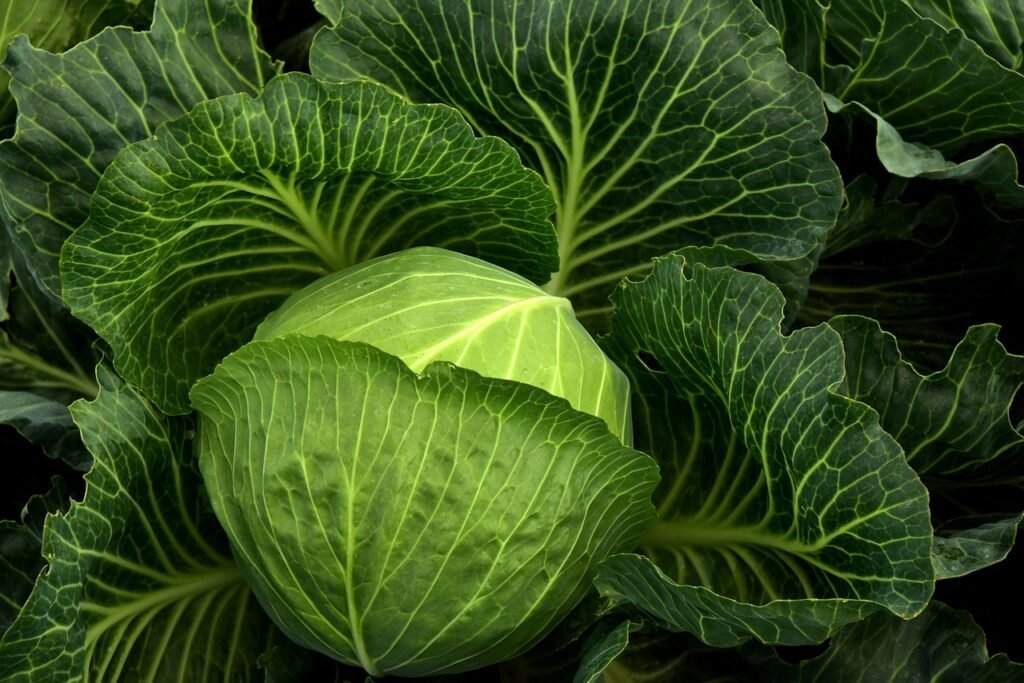
Cabbage, a versatile and nutritious vegetable, comes in various types such as green, red, Savoy, and Napa.
In this comprehensive guide, we will explore everything you need to know about growing cabbage, from choosing the right location to harvesting the plants.
We will also discuss the numerous health benefits of cabbage, including its immune-boosting and digestion-improving properties.
Additionally, we will provide some delicious ways to incorporate cabbage into your diet, such as raw cabbage saladand cabbage rolls.
Let’s dive in and discover the wonders of this underrated vegetable!
What are the Different Types of Cabbage?
Cabbage comes in a variety of types, each with its own unique characteristics and flavors.
- Green cabbage is the most common type, known for its pale green color, mild flavor, and crisp texture. It is versatile and can be used in salads, slaws, stir-fries, and even fermented as sauerkraut.
- Red cabbage, on the other hand, is vibrant with a slightly peppery taste. It adds a pop of color to dishes and is often used in salads and pickling.
- Savoy cabbage features crinkled leaves and a milder flavor, making it great for stuffing, wraps, or soups.
- Napa cabbage, also called Chinese cabbage, is elongated with a mild taste, commonly found in Asian dishes like kimchi and stir-fries.
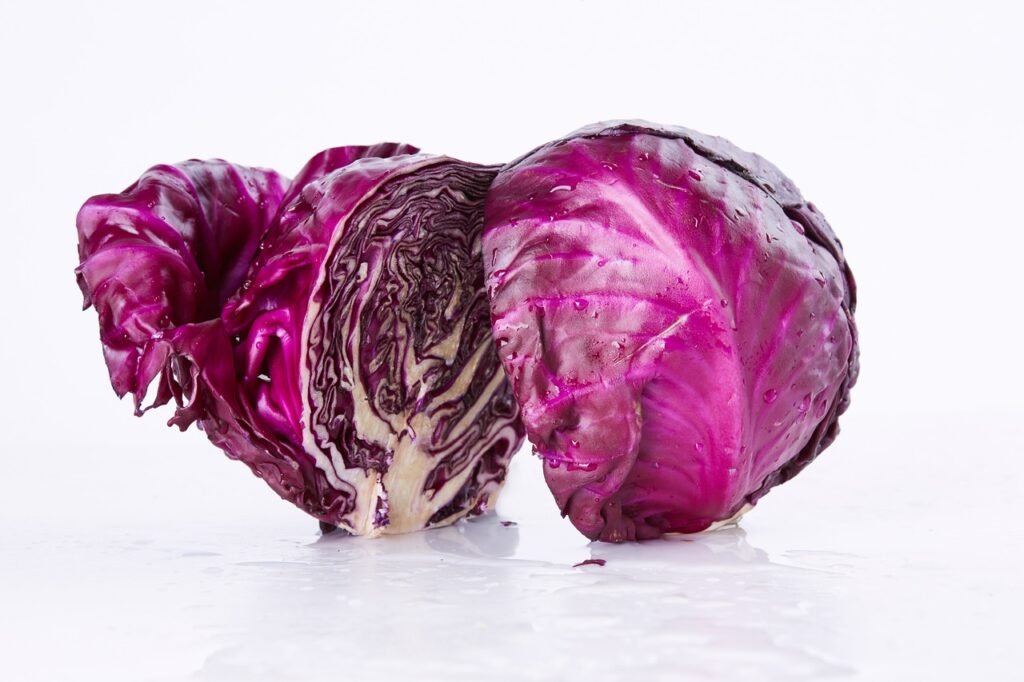
Green Cabbage
Green cabbage, a member of the Brassica family, is a ubiquitous variety known for its versatility in culinary applications.
Praised for its crunchy texture and mild flavor, green cabbage is a staple ingredient in dishes such as coleslaw and stir-fries. With its dense leaves and spherical shape, it is popularly cultivated in cool climates due to its hardy nature. Apart from its delicious taste, green cabbage also offers a host of health benefits, being low in calories and high in fiber and vitamins. Whether enjoyed raw in salads or cooked in soups and casseroles, green cabbage is a versatile and nutritious addition to any diet.
Red Cabbage
Red cabbage, with its vibrant hue and robust flavor profile, adds a colorful and nutritious element to various dishes.
Its antioxidant-rich nature makes it a valuable addition to a healthy diet, providing numerous health benefits. The deep purple color of red cabbage not only enhances the visual appeal of dishes but also signifies its high levels of anthocyanins, potent antioxidants that help support a strong immune system.
Its versatility extends to both raw and cooked preparations, making it suitable for vibrant salads or tangy pickling methods. Cultivating red cabbage requires well-drained soil and regular watering, while in the kitchen, it can be shredded, sautéed, roasted, or even fermented for a unique flavor profile.
Savoy Cabbage
Savoy cabbage, recognized for its crinkled leaves and delicate flavor, is a popular choice for adding texture and visual appeal to dishes.
Enthusiasts of Savoy cabbage often praise its versatility in the kitchen. Its tender leaves make it perfect for dishes like stuffed cabbage rolls and soups, where the leaves can absorb flavors while still retaining a slight crunch. Not only does Savoy cabbage bring a unique aesthetic to the table with its ruffled appearance, but it is also packed with beneficial nutrients like fiber, vitamin C, and K. Cultivating this leafy vegetable is relatively easy, making it an accessible option for home gardeners looking to enhance their culinary creations.
Napa Cabbage
Napa cabbage, also known as Chinese cabbage, offers a mild and slightly sweet taste, making it a versatile ingredient in Asian-inspired dishes.
Known for its elongated shape and tender texture, Napa cabbage is often used in various culinary traditions for its unique flavor profile. When cultivated, this leafy vegetable requires ample sunlight and well-drained soil to thrive. Rich in vitamins C and K, Napa cabbage is celebrated for its numerous health benefits, including boosting immunity and promoting bone health. Whether shredded for a vibrant kimchi or quickly sautéed in stir-fries, this cabbage adds a delightful crunch and subtle sweetness to any recipe it graces.
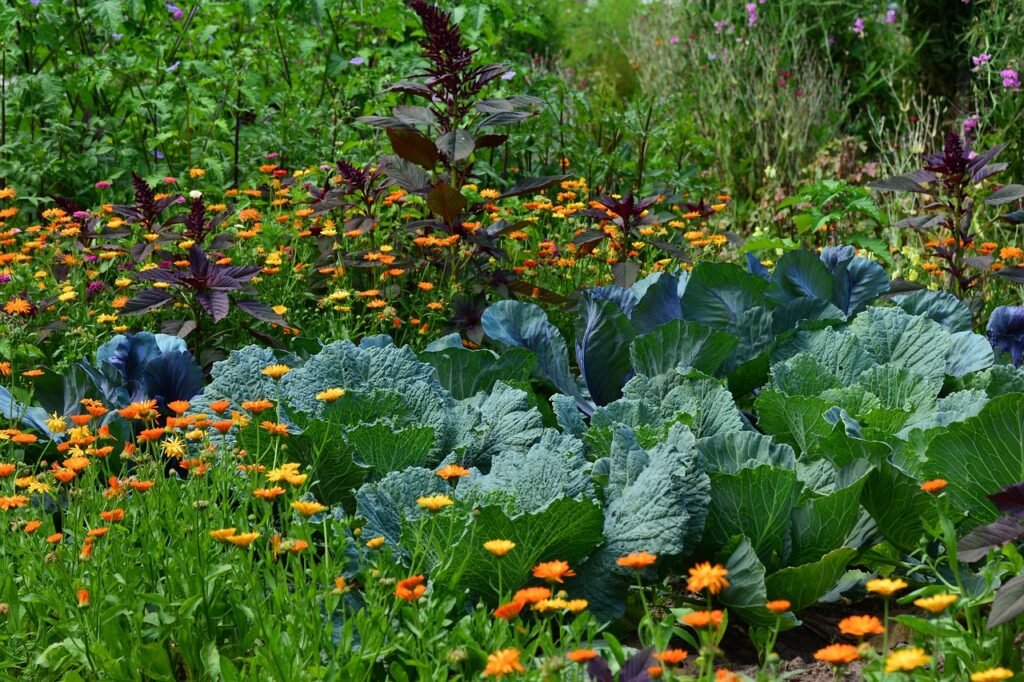
How to Grow Cabbage?
Growing cabbage requires careful attention to planting, soil conditions, watering, and pest management throughout its growing season.
When selecting a location to plant cabbage, aim for an area that receives full sun for at least six hours a day. Avoid spots where cabbage or other brassicas were grown in the previous year to prevent disease buildup.
Before planting, enrich the soil with compost to improve drainage and fertility. When sowing seeds, ensure they are placed about half an inch deep and 18-24 inches apart.
Regularly monitor moisture levels in the soil, ensuring it remains consistently moist but not waterlogged. Employing organic mulch can help maintain soil moisture and reduce weed growth.
Choosing the Right Location
Selecting the ideal location for planting cabbage involves considering factors like sunlight exposure and temperature requirements for optimal growth.
Ensuring that your cabbage crop receives sufficient sunlight is essential, as it aids in photosynthesis and promotes robust plant development. Temperature plays a crucial role, with cabbage thriving in cool climates between 45-75°F. A well-draining soil with ample organic matter is also vital, as cabbages prefer fertile soil with a pH level of 6.0-6.8. By choosing a site that meets these criteria, you set your cabbage plants up for success, leading to healthy yields and delicious produce.
Preparing the Soil
Preparing nutrient-rich soil for cabbage cultivation involves organic practices like composting to enhance soil fertility and provide essential nutrients.
Incorporating organic fertilizers such as well-rotted manure or compost into the soil before planting cabbage can significantly improve soil structure and promote healthy root development. Composting not only recycles kitchen and garden waste but also increases the population of beneficial microorganisms in the soil, aiding in nutrient availability for the cabbage plants.
Regular application of compost helps maintain soil moisture levels, prevents nutrient leaching, and boosts overall soil health, creating an optimal environment for cabbage growth. Ensuring proper aeration and drainage in the soil further supports the growth of robust cabbage plants, leading to a bountiful harvest.
Planting Cabbage Seeds
Planting cabbage seeds with proper spacing and adhering to crop rotation practices helps maintain soil health and prevent disease outbreaks.
- When planting cabbage seeds, it is important to space them about 12-18 inches apart to allow ample room for growth. Seeds should be sown approximately 1/4 to 1/2 inch deep in well-draining soil.
- Crop rotation plays a crucial role in preventing the buildup of soil-borne diseases and pests, as it involves planting different crops in the same location each season. This practice also helps to balance soil nutrients and improve overall soil quality, ensuring a bountiful harvest of healthy cabbage.
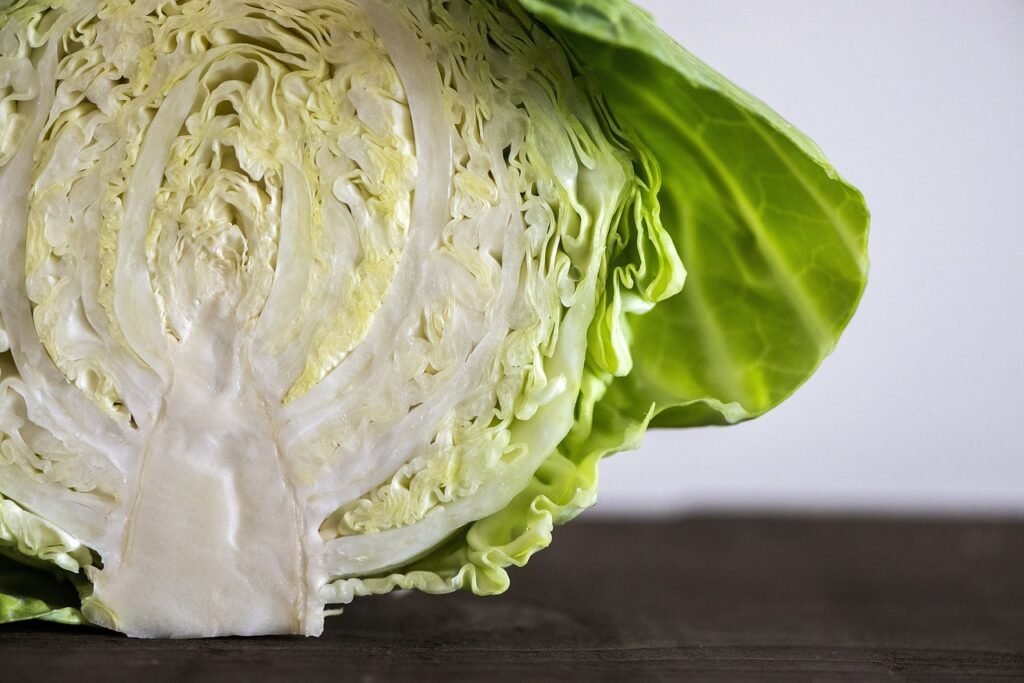
Caring for Cabbage Plants
Proper care for cabbage plants involves regular watering, monitoring for pests and diseases, and implementing pruning techniques for optimal growth.
- Maintaining proper spacing between cabbage plants is crucial to ensure adequate airflow and room for growth.
- To prevent overwatering, which can lead to root rot, it is advisable to water deeply but infrequently, allowing the soil to partially dry out between waterings.
- Introducing beneficial insects like ladybugs and lacewings can help control harmful pests naturally, reducing the need for chemical interventions.
- Regularly inspecting cabbage leaves for signs of damage or disease and promptly removing any affected foliage can prevent the spread of infections within the garden.
Harvesting Cabbage
Knowing when and how to harvest cabbage ensures the best flavor and quality, whether harvesting the entire head or individual leaves for consumption.
- Harvesting cabbage is a delicate process that should be timed just right. Typically, cabbage is ready for harvest when the heads feel firm to the touch. To collect the entire head, use a sharp knife to cut through the stem just below the head. If opting to harvest individual leaves, gently pull them from the outer layers of the plant.
- After harvesting, it’s important to store cabbage in a cool, dark place to maintain its freshness. Proper storing techniques can significantly impact the longevity of harvested cabbage, ensuring it stays crisp and flavorful for longer periods.
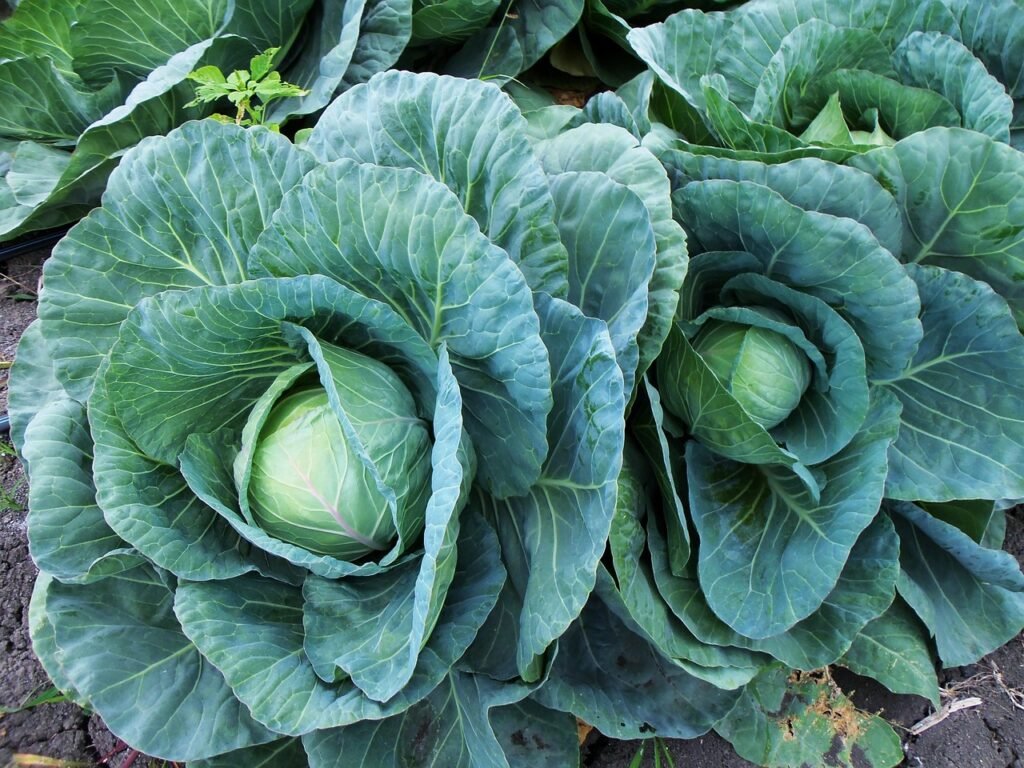
What are the Health Benefits of Cabbage?
Cabbage is a nutritional powerhouse, rich in essential nutrients like fiber, antioxidants, and high levels of Vitamin Cthat offer numerous health benefits.
Vitamin C in cabbage acts as a powerful antioxidant, supporting the immune system and promoting healthy skin. The fiber content aids in digestion and helps maintain a healthy gut. Antioxidants present in cabbage help fight inflammation and protect cells from damage. Including cabbage in your diet can assist in weight management, reduce the risk of chronic diseases, and improve overall well-being.
Rich in Nutrients
Cabbage boasts a diverse nutrient profile, providing essential vitamins like Vitamin C, dietary fiber, and powerful antioxidants that support overall well-being.
Vitamin C, known for its immune-boosting properties, plays a key role in collagen formation, aiding in skin health and wound healing. The fiber content in cabbage promotes digestive health by supporting regular bowel movements and maintaining a healthy gut. The antioxidants in cabbage help protect cells from damage caused by harmful free radicals, reducing the risk of chronic diseases. Including cabbage in your diet can significantly contribute to improving overall health and well-being.
Boosts Immune System
The Vitamin C content in cabbage plays a vital role in boosting the immune system and supporting the body’s defense against illnesses.
This essential nutrient is known for its ability to strengthen immune responses, helping the body ward off infections and common colds. Vitamin C in cabbage acts as a powerful antioxidant, neutralizing harmful free radicals that can weaken immunity and contribute to chronic diseases.
By consuming cabbage regularly, one can enhance their body’s natural defenses, reduce inflammation, and lower the risk of various health conditions. Incorporating this nutritious vegetable into your diet can be a simple yet effective way to fortify your immune system and stay healthy.
Improves Digestion
The fiber content in cabbage aids digestion and promotes digestive health by supporting regular bowel movements and gut function.
The dietary fiber found in cabbage plays a crucial role in maintaining optimal gastrointestinal wellness. This fiber helps to bulk up stool, making it easier to pass through the digestive system, thus reducing the likelihood of constipation.
Cabbage fiber acts as a prebiotic, fueling the growth of beneficial bacteria in the gut, which in turn contributes to improved gut function and overall digestive health. By incorporating cabbage into your diet on a regular basis, you can effectively enhance your digestion and promote a healthy gut environment.
May Help with Weight Loss
As a low-calorie food rich in fiber, cabbage can aid in weight loss efforts by promoting satiety and reducing overall calorie intake.
Its high fiber content helps keep you feeling full for longer periods, minimizing the urge to snack on high-calorie foods throughout the day. Incorporating cabbage into meals can also lead to a lower calorie consumption, as it provides volume and texture without significantly increasing the caloric content. By including cabbage in a well-rounded diet, individuals can benefit from its nutritional value while supporting their weight management goals.
Contains Antioxidants
Cabbage contains antioxidants that help combat oxidative stress, reducing the risk of heart disease and promoting cardiovascular health.
These antioxidants found in cabbage, such as vitamin C and sulfur compounds, work by neutralizing harmful free radicals in the body. Free radicals can cause damage to cells and contribute to inflammation, which are key factors in the development of cardiovascular diseases.
By scavenging these free radicals, cabbage helps protect the heart and blood vessels from oxidative damage. Incorporating cabbage into your diet regularly can provide a natural defense mechanism for your cardiovascular system, supporting overall heart health.

How to Incorporate Cabbage into Your Diet?
Including cabbage in your diet can be delicious and nutritious, with versatile options like salads, soups, and fermented dishes.
You can easily add a crunchy twist to your meals by incorporating raw cabbage in refreshing salads, or create a comforting and warming bowl of soup by simmering cabbage with other vegetables and herbs.
If you’re looking for a flavorful and wholesome meal, try making stir-fries with cabbage alongside your choice of protein and seasoning.
For a traditional touch, experiment with cabbage rolls stuffed with a savory filling and topped with a delicious sauce.
And don’t forget about the tangy and probiotic benefits of making your own sauerkraut to complement a variety of dishes.
Cabbage truly offers a world of culinary possibilities to explore!
Raw Cabbage Salad
A refreshing raw cabbage salad offers a crunchy texture and vibrant flavors, making it a nutritious addition to a healthy eating plan.
This simple salad can be whipped up in no time, requiring just a few basic ingredients like shredded cabbage, colorful bell peppers, and a zesty lemon dressing.
Packed with vitamins, fiber, and antioxidants, raw cabbage is known to support digestion and boost immunity.
The combination of fresh vegetables in this salad provides a burst of colors and nutrients, creating a visually appealing dish that is as delightful to eat as it is beneficial for your health.
The tangy and slightly sweet flavors from the dressing complement the crispness of the cabbage, resulting in a harmonious blend of taste and texture.
Cabbage Soup
Comforting cabbage soup is a nourishing and satisfying dish that can be enriched with various vegetables and herbs for a wholesome meal.
This versatile soup is not only delicious but also packed with essential nutrients, making it a fantastic choice for a healthy dinner option. Adding ingredients like carrots, onions, and celery can enhance the flavors, while incorporating beans or lentils can increase the protein content. Whether you prefer a vegetarian version or want to add some protein with chicken or beef, cabbage soup can accommodate various dietary preferences. Its simplicity in preparation allows for a quick and easy meal that will surely warm both your heart and your belly.
Stir-Fried Cabbage
Stir-fried cabbage delivers a quick and flavorful option for busy meals, combining the crunch of cabbage with savory seasonings and proteins.
This versatile dish can be whipped up in no time, making it a perfect go-to for those hectic weeknights when you need a delicious meal in a hurry. With its simple preparation process and minimal cooking time, stir-fried cabbage is a fantastic choice for anyone looking for a convenient and satisfying meal solution. The best part is that you can easily customize this dish to suit your taste preferences by adding your favorite vegetables, meats, or spices, allowing you to create a unique and tasty stir-fry every time.

Cabbage Rolls
Cabbage rolls, a classic comfort food dish, showcase the versatility of cabbage as a wrapper for delicious fillings like rice, meats, and vegetables.
These traditional Eastern European delights are a versatile and customizable dish that can be tailored to suit various dietary preferences and flavor profiles. Whether you prefer a classic recipe with seasoned ground beef and rice or want to experiment with a vegan twist using lentils and quinoa, cabbage rolls offer endless possibilities for culinary creativity.
In addition to the usual ingredients, you can explore global influences by incorporating spices from different cuisines like curry powder or smoked paprika to add a unique twist to this beloved dish.
Fermented Cabbage (Sauerkraut)
Homemade sauerkraut, a tangy and probiotic-rich fermented cabbage dish, offers unique flavors and digestive benefits in every tangy bite.
The fermentation process is key to transforming simple cabbage into a powerhouse of gut-friendly bacteria through natural preservation techniques. As the cabbage ferments, beneficial bacteria thrive and multiply, enhancing the probiotic content of the sauerkraut. This not only contributes to a stronger immune system but also aids in better digestion and overall gut health.
The tangy taste of sauerkraut is a result of this fermentation process, providing a distinct and satisfying flavor profile that complements a variety of dishes.
Cabbage Growing Guide Wrap up
Embarking on the journey of growing cabbage in your garden not only rewards you with a versatile and nutritious vegetable but also enriches your understanding of plant care. To dive deeper into the world of gardening and expand your green thumb skills, we invite you to explore further with us.
Our blog is brimming with insightful articles, from detailed vegetable growing guides to expert tips that cater to both novices and seasoned gardeners alike. By subscribing to our newsletter, you’ll stay informed about the latest gardening trends, techniques, and seasonal advice.
Join our community at Garden Guys, where we nurture a passion for gardening, share experiences, and celebrate the bounty of the earth. Let’s grow together, discovering the joys and challenges of gardening one crop at a time.
Frequently Asked Questions
A cabbage growing guide is a set of instructions or recommendations for successfully growing cabbage plants from seed to harvest.
To grow cabbage from seed, start by planting the seeds in a seed tray or small pots. Once the seedlings have grown, transplant them to a larger pot or directly into the ground. Ensure they receive plenty of water and sunlight, and fertilize as needed. Harvest when the heads are firm and the leaves are a deep green color.
Cabbage plants can be harvested when the heads are firm and the leaves are a deep green color. This usually occurs in late summer or early fall, depending on the variety and growing conditions.
Cabbage is a nutrient-dense vegetable that is low in calories but high in vitamins and minerals. It is a good source of fiber, vitamin C, vitamin K, and folate. Eating cabbage may also have anti-inflammatory and antioxidant properties.
Yes, cabbage can be grown in containers as long as they are large enough to accommodate the growing plant and have good drainage. Make sure to use a high-quality potting mix and provide adequate water and sunlight for healthy growth.
To prevent common cabbage growing problems such as pests and diseases, make sure to rotate your crops, keep the plants well-watered, and remove any damaged leaves or plants. You can also use organic pest and disease control methods, such as companion planting and natural remedies.



